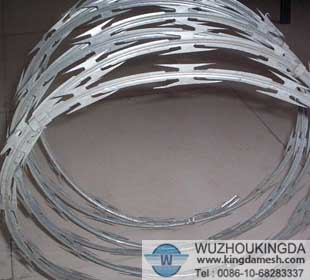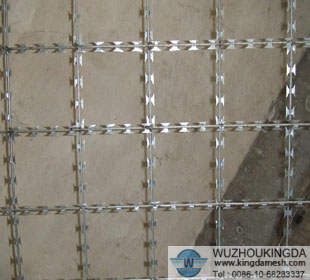How to Make a Barbed Wire Fence
How to Make a Barbed Wire Fence
Farm animals, whether cared for as a business or as a hobby, must be fenced into a specific location to prevent them from wandering off on to busy roads or onto adjacent property. The two most widely-used types of fencing are electric fence wiring and barbed-wire fence wiring. Of the two, the barbed wire fence requires much less thought when installing. Instead of connecting electrical and ground wires as in an electric fence, barbed wire has sharp needle-like points which induce pain should an animal make contact with it. A barbed-wire fence consists of posts, wire and heavy duty staples holding the wire to the posts.
Instructions
1 Walk around the entire square or rectangular perimeter where the fence wire and posts will be run. Use a measuring wheel to measure the total distance of the area walked and write the total number of feet on a piece of paper. Divide the number by 12 if placing a post every 12 feet. This calculation will provide the total number of wooden fence posts that will be required for the fencing project. Add two additional posts to that number to be used in constructing a fence gate.
2 Dig the first corner post hole 3 feet deep using a manual post hole digger. Place one of the strongest, straightest posts in this corner hole as it will be supporting much of the wire tension. Fill in the hole with soil while holding the post vertical and level, tamping the soil firmly around the post.
3 Tie the end of a spool of kite string to the lower portion of the first corner post and unwind string while walking to the location where the next corner post will be placed. Dig a 3-foot hole in this location and place another corner post into this hole. Hold vertical and level while filling in the hole with soil and tamp very firmly. Leave the first length of kite string on the ground, circle the string around the base of the second post and unwind string while walking to the locations where the third and fourth corner posts will be installed, installing the last two corner posts as was done for the first two.
4 Unwind string while walking back to the first corner post and tie it off. There should now be kite string all around the perimeter to be used as a guide for installing all additional posts.
5 Install one post every 12 feet around the fence, using the strongest and straightest posts for every fourth post to serve as "stretcher posts." These posts will hold the majority of wire tension around the perimeter.
6 Build a wire spacing brace out of a five-foot long piece of 2x4 lumber. Mark the end which will be the bottom. Measure 1 1/2 feet from the bottom and pound a nail about 1/2 inch into the lumber. Measure 1 1/2 feet higher than the first and tap in another nail.
7 Put on a pair of heavy leather gloves and unroll several feet of the barbed wire. Place the wire end on top of the lower nail of the spacing guide built in Step 6 and staple the wire to the post with several staples for excellent holding strength.
8 Unroll the wire to the first stretcher post and wind the wire around a piece of 1x1 lumber, winding about 1 inch to the side of the stretcher post (1 inch in the direction of the last post wire was stapled to) and then use the wood as a handle to pull the wire tight and the wood is centered vertically on the stretcher post. Have a partner nail the top and bottom of the wood to the post. Perform this step for all stretcher posts, pulling the wire tight at each stretcher post. Use the wire guide so the wire is the same height on each of the posts.
9 Unroll the barbed wire which will be the top length. Attach first to all corner and stretcher posts as performed when installing the lower wire. Use the wire guide for wire placement when stapling.
10 Staple the wires to each of the spacing posts all around the perimeter, using the wire guide to keep the wires at the same height on all posts.
11 Attach the last end of the barbed wire to a separate post which will remain out of the ground. This post will serve as a gate post and should be attached to the first corner post with leather straps or heavy-duty rope. Remove the straps and swing the gate open and closed when needed, securing when finished.




